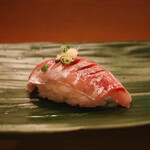
ひょうたん寿司
Hyoutanzushi
3.60
Tenjin
「Sushi」
5,000-5,999円
3,000-3,999円
Opening hours: [Sunday-Saturday] 11:30-15:00(LO14:30) 17:00-21:30(LO21:00) Open Sunday
Rest time: Open daily Open hours and holidays are subject to change, so please check with the store before visiting.
福岡県福岡市中央区天神2-10-20 2F・3F
Photos
(20)

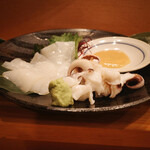
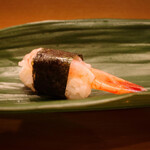
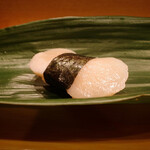
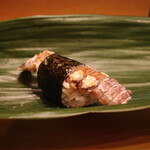
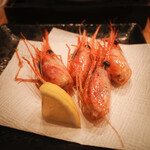
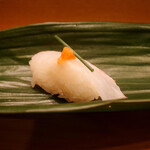
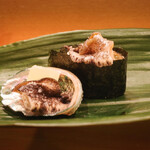


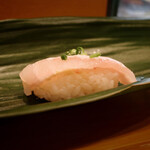
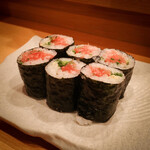
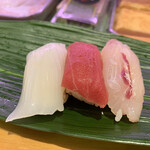
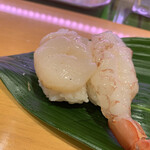
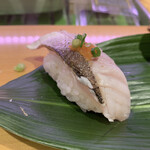
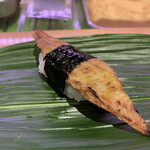
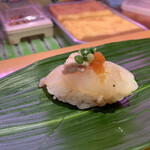


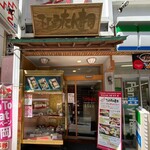
Details
Reservation Info
No Reservations
Children
child-friendly
Payment Method
No credit cards
Electronic money is not accepted
Private Dining Rooms
None
Smoking and Non-Smoking
No smoking at the table
Parking
None
Facilities
Counter seating available, tatami room available
Drink
Sake and shochu available
Dishes
Focus on fish dishes
Comments
(21)
G‐G-MOMOCHI
4.20
Located on the west side of the Fashion Building "Solaria Plaza" just north of the north exit of Tenjin Station on the Nishitetsu Tenjin Omuta Line in Tenjin 2-chome, Chuo-ku, Fukuoka City, this sushi restaurant was founded by the head chef, Ryuichi Yamada, in 1964 at the food court "Aji no Town" in the basement of Nishitetsu Fukuoka Station. Later, it was relocated next to the music cafe "Showa," which led the music scene in Hakata, in a three-story building and renamed "Hyotan Sushi Main Store," and was renovated into "Hyotan Revolving Sushi" in the basement 2nd floor of the station building "Solaria Stage," operating in a two-store system. While the head chef has passed on the business to his son, the second generation, Yasushi Yamada, he still stands behind the counter at the main store as a craftsman. The restaurant is known for offering fresh and large sushi at affordable prices, mainly using fish caught in the Genkai Sea and nearby waters on the north side of Hakata. Popular items include the "Live Bite-sized Abalone Sushi Dance" and the "Grilled Conger Eel Sushi" with a fluffy texture. The chef's special "Crab Cream Croquette," made with plenty of snow crab in the side menu, is also popular. However, the lunch-exclusive set menus are particularly popular for their high cost performance. The most popular is the "Seasonal Omakase Nigiri," which includes 10 seasonal and regular sushi pieces plus a choice of either "Crab Cream Croquette," "Jumbo Chawanmushi," or "Clam Soup." Another frequently featured menu item is the "Jumbo Set Meal," which includes 10 nigiri, 3 thin rolls, and clear soup and can be enjoyed for just one thousand yen on weekdays. After visiting the special exhibition of fantasy paintings by domestic artists at the Fukuoka City Museum of Art with Kanai, we moved to the bustling district of Tenjin for some window shopping. We then had dinner at this most popular sushi restaurant in Tenjin, "Hyotan Sushi Main Store." Before the pandemic, we used to come for lunch without minding the queue, but in recent years, we have refrained from visiting due to its popularity. At one point, the waiting line was no longer visible from outside the store, but this time, we found many inbound customers, especially from Korea, enjoying the restaurant. We joined the queue and after about 30 minutes, we were seated at a table on the second floor. While we would have preferred the counter seats where we could watch the chef making sushi up close, we couldn't be too picky. Since we couldn't have the lunchtime set menu, we decided to order our favorite sushi a la carte. Kanai ordered "Yellowtail," "Seared Pacific Saury," "Salmon," and "Tobiko," while I ordered "Horse Mackerel" and "Bigfin Reef Squid." We started by enjoying these sushi pieces along with a glass of beer for me and tea for Kanai. We then added "Sweet Shrimp," "Sea Urchin Battleship Roll," the restaurant's famous "Grilled Conger Eel Sushi," and the acclaimed "Crab Cream Croquette." Finally, we ended our meal with the "Live Bite-sized Abalone Sushi Dance" and "Jumbo Chawanmushi" served with rock salt and lemon. The fresh and large sushi pieces and the al dente texture of the sushi were delicious, as expected. The rich flavor of the "Crab Cream Croquette," made with plenty of snow crab, and the ingredients-rich "Chawanmushi" with shrimp, squid, scallop, white fish (probably cod), shiitake mushrooms, and trefoil were also exquisite. It was a truly delicious dinner, and we once again understood why even Hakata locals who dislike queuing silently line up at this restaurant. We enjoyed what we wanted to eat, and the bill came out to about 10,000 yen for the two of us. It's truly a high-cost performance sushi restaurant. We will visit again, thank you for the meal.
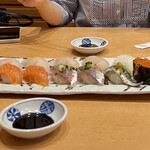
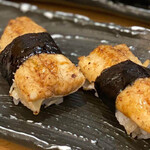
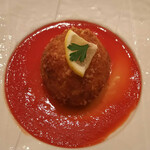
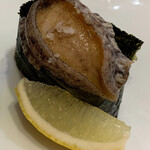
さき19851125
3.50
I lined up for about 15 minutes for lunch again today, and I was guided to the 3rd floor. I usually don't order individual items, but this time I did, including the miso soup. Each piece of sushi was placed in front of me at the right timing. The chef asked me about the degree of searing for each piece of sushi, and I felt like he thought I was pregnant. Despite the busy and crowded restaurant, the chef was very kind and polite until the end, and the other staff members worked efficiently. I had a pleasant lunchtime. I believe that what I can do for the restaurant is to order quickly, eat, and give up my seat to the next customer as soon as possible. I am sincerely grateful for the delicious sushi they serve every time. In my personal opinion, the seared Saga beef is exquisite! I recommend it more than the conger eel! I will definitely come back.
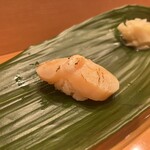
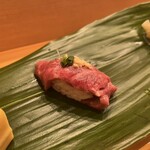
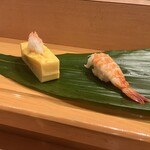
もち223
4.50
On the last day in Fukuoka, I visited Hyotan Sushi, recommended by a local. The photo shows only the order before the sushi was made, but everything was delicious! Each dish was so tasty that it left me speechless. I tried sesame mackerel, bonito sashimi, one-bite skewers, crab cream croquette (with a lot of crab), and fried conger eel. It's a popular restaurant with a line, but waiting was definitely worth it!
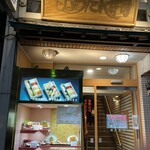
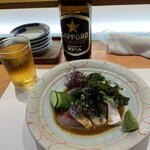
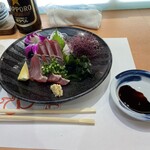
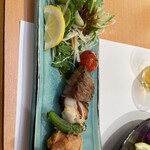
さき19851125
3.50
Tenjin Station is a 3-minute walk away. There is always a line, even decades ago. The first floor has only stairs to line up, and meals are served on the second and third floors. They will only seat you when your entire party is present. They offer a great value lunch on weekdays. The jumbo set meal is 1100 yen with miso soup. For regular lunch sets, they come with clear soup. They have several course options available. They also have a variety of side dishes, and you can add sushi by the piece. The staff may be busy, but they are friendly and energetic. I have been a regular customer for a long time, and I am always satisfied. It's a cheap and delicious restaurant, worth waiting in line for.
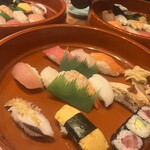
show-biz
3.60
I usually line up according to the opening time, but this time I visited around 1:00 pm, after the second round was finishing. As expected, there were about 30 people waiting. Unfortunately, the chawanmushi set meal was removed from the menu, possibly due to the high cost of eggs, which was disappointing. However, I started with grilled conger eel in sauce and beer. Then, I enjoyed a mixed shellfish platter, seasonal assorted sushi, and a few other dishes. The taste was consistently good and delicious.
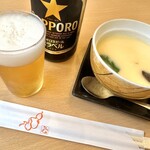
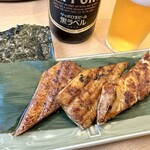
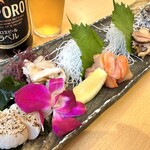
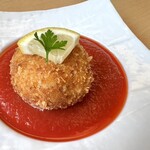
akipon12
3.50
If you come to Fukuoka, you have to go to Hyotan Sushi. I arrived at the restaurant at 4:40 in the evening, and there were only 2 people on the stairs from the first floor! It was really empty! Even including the line on the 2nd and 3rd floors, I easily got in on the first round. I saved a live squid and asked the chef to keep it until my companion arrived. The chef kindly told me to relax and enjoy my drink until my companion arrived, so I ordered some sesame amberjack as an appetizer. To be honest, I'm quite picky about white fish, so I should have just stuck with the normal sesame mackerel... By the time I took a sip of my second beer, my companion arrived. There seemed to be a line all the way down the stairs to the restaurant, so my companion hesitated whether it was okay to enter, but I reassured them it was fine to cross the line and come in. Let's order! What should we order? We got a live squid, crab cream croquette, sushi, and saltwater sea urchin sashimi. My companion was excited as it was their first time at Hyotan. We picked out a few pieces of sushi, and my companion devoured the crab cream croquette in one go. They said they still wanted more croquettes. In the end, we ordered sushi for two sushi lovers, drank and ate, and the total bill was around 12,000 yen. Hyotan Sushi is a friend of the common people! I'm so full!
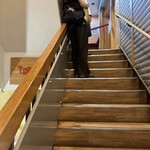
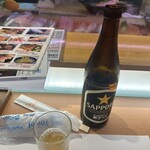
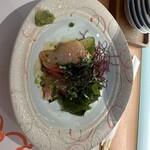
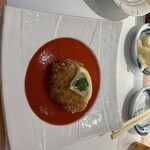
mogmogram
4.10
I heard that there would be a long line, so I was prepared when I visited, but I was able to enter after waiting for about 30 minutes around 7:00 pm on a weekday. The restaurant was crowded, but the staff were efficient and I didn't feel bored waiting. The sushi pieces were all very large and the cost performance was excellent. The taste was also delicious, and personally, the sea urchin was rich and impressive. The sardines recommended by the chef were also very tasty with a lot of fat. I had a very satisfying meal, so I would like to visit again.
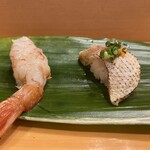
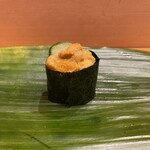
彼岸花1013
3.00
When I went after a long time... they had gotten rid of the weekday lunch special set (TOT) which was really good, with options like crab cream croquette, chawanmushi, and miso soup where you could choose two items... It's a shame! But the food was still delicious as always♪
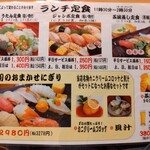
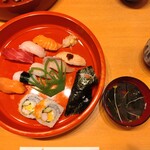
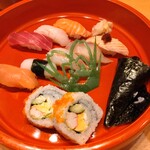
35fa46
5.00
I lined up 30 minutes before the store opened for lunch. It was one of the restaurants I had wanted to try. I ordered the Jumbo set meal (10 pieces, thin rolls, miso soup) with a lunch beer (small draft), and later ordered the horse sashimi sushi. The fish was thick and fresh, and the cost performance was as great as rumored! I was extremely satisfied. Next time I go, I want to enjoy some sake as well. By the way, the bill for this day unintentionally came out to 2222 yen, a funny coincidence!笑

kotok455
3.50
During summer vacation, the restaurant was very crowded and I had to line up before it opened. The line was long and I waited for over an hour. I asked to exchange the red clams because their color didn't look right, but my request was denied. The black plate I had cost 2700 yen and I was still a bit hungry, so I ordered an additional chawanmushi. The red plate cost 3300 yen, so I'm not sure about the value for the money.
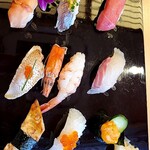
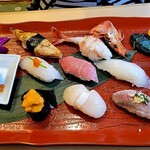
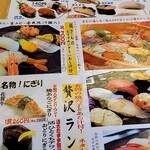
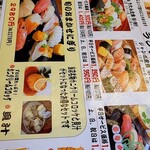
patalliro!
3.80
I arrived before the store opened and found a long line already formed. The shop seemed to cater mainly to foreign tourists, as there were many of them in the line. I decided to order the recommended sushi set, which included delicious items such as grilled eel, saltwater sea urchin, shrimp, and kawahagi fish. The classic choices like fatty tuna, sea bream, and egg were also top-notch. Despite the long line, the turnover at the shop was quite good, so I plan to visit again. Thank you for the meal!

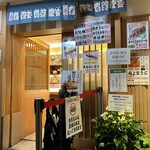
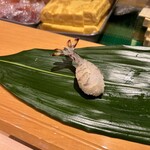
おつまみ小魚
4.50
It was fantastic. Everything was top-notch from start to finish. The food was truly fresh and delicious, every bite was incredibly tasty. I sat at the counter and the chef would suggest the next dish without making me feel pressured.
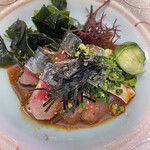
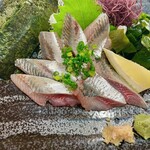
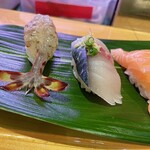
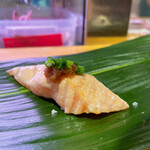
yakitoriちゃん
3.20
I visited for Sunday lunch. I lined up an hour before opening, so I was the 5th in line and was able to enter as soon as they opened, but when I finished eating and went outside, there was a long line. I recommend going before they open. I ordered the seasonal omakase sushi, which was good value and the fish was delicious. I had high expectations for the crab cream croquette, but it was just okay. However, since you can't make reservations and you have to wait at least an hour, I probably won't go back. It's a bit disappointing that most of the customers are foreigners.
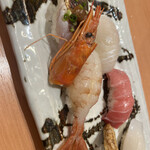

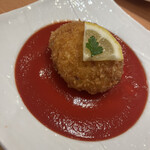
kokotowa8
3.50
This place always has long lines, so I'm usually not keen on going, but I happened to go just before closing time when there was no line, so I was able to go for the first time. This shop is more popular with tourists, especially foreigners, than locals. The taste is quite delicious, and I think the cost performance is excellent.
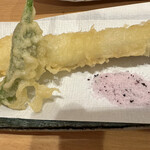

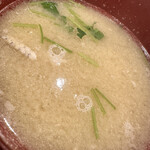
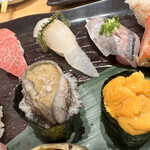
show-biz
3.70
Visited this place with a full appetite. Settled into a raised seating area on the third floor and ordered sushi, anago as a side dish, and more. Many foreign customers here. The taste is always reliable and comforting. Probably the best anago sushi I've ever had. Ate so much that I couldn't have another bite and left! Thank you for the meal!
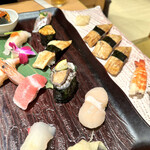
taka4070
4.00
I often visit this restaurant when I have private guests from overseas or other prefectures. They really enjoy the fresh seafood, especially the ones from Fukuoka waters, during lunch. We usually start with the chef's choice sushi set to settle our stomachs, and then enjoy signature dishes such as crab cream croquette, grilled spiny lobster, and Saga beef sushi. It's a sushi restaurant with great value for money!
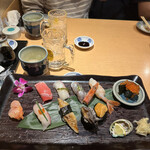
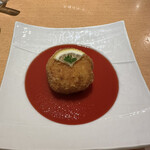
福岡住みの神奈川県民
3.80
I couldn't make a reservation, so I went right at noon... and had to wait for an hour. There were a lot of Asian people there. I wonder if it's listed on some Asian website? The taste of all the dishes was worth the price. Not too expensive and just right. The chawanmushi, ikura, and otoro were especially delicious, but I ended up eating too much... By the time I left, I was full! It was delicious.
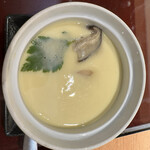
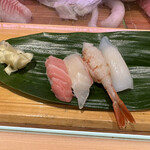
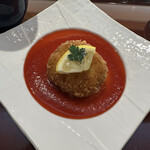
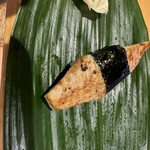
ohanapon
3.90
I arrived at "Hyotan Sushi" in Tenjin around 12 o'clock on a weekday and there was a wait time of over 60 minutes. Many foreign tourists were lining up! I talked to a tourist behind me and they said they look for Japanese gourmet food on Tabelog (a restaurant review site)! I was surprised and waited for about 45 minutes to get inside. Since reservations are not accepted, there's no choice. Everything was really delicious! I ate a lot and it cost around 8000 yen. I felt like I ate too much, but it was so delicious, so I'm glad! I want to go there again when I come back to Fukuoka! #TenjinGourmet #TenjinLunch #TenjinSushi #Sushi #WantToConnectWithPeopleWhoLikeGourmet

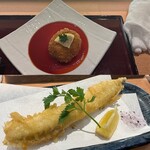


しばりんの幸せ
3.50
I visited the restaurant in the early afternoon. There was a line of about 20 people waiting outside, but luckily I was able to be seated inside in about 10-15 minutes. I had lunch at the counter. It was a nice change from my usual sushi restaurant visits. The sushi, chawanmushi, and miso soup were all delicious. I look forward to trying a different lunch menu next time. Thank you for the meal! (^ ^)




Beerr
3.30
The restaurant opened at 11:30. I heard it gets crowded, so I went at 11:00 to wait a bit... but there was already a long line! I heard it might be iffy to get in on the first try, so I hesitated to line up again from there... but I decided to wait until 11:30 to see how it goes, and ended up getting in at 11:45. The line was still very long, showing how popular the place is. I ordered the abalone, uni which was described as fresh, otoro, and a set with 10 pieces of sushi and clam soup (3,300 yen), as well as eel tempura and a draft beer. It was a joy to be able to drink beer from lunchtime. The eel was small but delicious without any strange smell. The sushi was indeed fresh with various toppings, and the abalone was served with lemon to squeeze over it. It was still alive which made me hesitate for a moment, but it had a crunchy texture and was delicious. The clam soup had no strange smell and was tasty. However, the uni, on the other hand, was not as delicious... It may be somewhat decent, but it lacked the unique sweetness of real delicious uni, which was disappointing. Considering the price, it might be sufficient... Thank you for the meal.
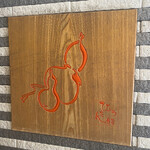

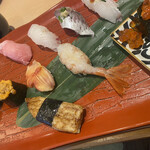
Kjohji2421
4.50
I visited the restaurant on a Sunday afternoon. I arrived around 1:30 pm and there were about 20 people waiting in line, with a sign indicating a 60-minute wait. In reality, the turnover rate was fast and I was able to get in after just 10 minutes, so I recommend visiting in the early afternoon. The restaurant had a counter with 10 seats, table seating for 5 people x 5 tables, and 5 seats in a tatami room. There is also a third floor, so there are more seats available. For lunch, they offer options priced around 2600 yen (12 pieces of sushi, cream croquette, miso soup, and one more dish of your choice), 1400 yen (8 pieces of sushi, 2 salad rolls, 1 hand roll, and clear soup), and 1350 yen (12 pieces of sushi and clear soup). I chose the 1400 yen lunch set and also ordered a side of shrimp tempura. The sushi had thick slices of fish and I was quite satisfied with the 1400 yen set! The shrimp tempura I ordered as a side was very fresh and delicious, even more satisfying than the sushi! Both the sushi and side dishes were very satisfying, so if you're looking for a lunch spot in Fukuoka, I highly recommend giving this place a try!

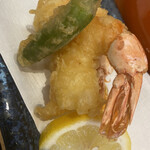
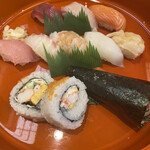
Email Login